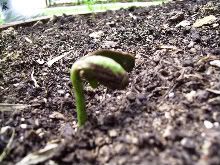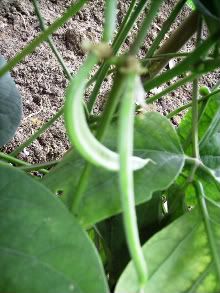"they were little more than sticks that flopped out of the bow, sometimes going sideways. Even when a bird was seven or eight feet away the arrow would turn without feathers to stabliise it..."
Q9) Explain clearly how feathers can help to stabilise the arrows?
How To Soar in PSLE - BTPS Way!!
Interact with complex questions / graphs / pictures to pick up valuable clues (don't highlight - just use your pen to underline words or scribble notes)
Start with Booklet A and do it meticulously with full focus - explore all 4 distractors before making final choice.
MANAGE your TIME - to score well, you need to try to finish ALL questions.
Specific answers = answers that are relevant to question.
When confused, choose any of the following strategies:
1. Ask, "What Science idea is being used in question?"
2. Pose other questions to clarify your thoughts
3. COMPARE to another set-up
4. COMPARE to a reverse situation
5. Connect to your knowledge in life (yes, you do have lots of prior / other knowledge)
6. Break down your answer in steps before crafting final answer.
Common problems with wrong answers:
*Answers are generic/vague and do not connect to that specific question
*Answers are not scientific and do not explain using Science ideas
*Answers do not make use of data provided when asked
*Answers did not make comparisons - use words like more/most etc..when asked
BTPS supports all P6 in achieving their PSLE GOALS!!
Start with Booklet A and do it meticulously with full focus - explore all 4 distractors before making final choice.
MANAGE your TIME - to score well, you need to try to finish ALL questions.
Specific answers = answers that are relevant to question.
When confused, choose any of the following strategies:
1. Ask, "What Science idea is being used in question?"
2. Pose other questions to clarify your thoughts
3. COMPARE to another set-up
4. COMPARE to a reverse situation
5. Connect to your knowledge in life (yes, you do have lots of prior / other knowledge)
6. Break down your answer in steps before crafting final answer.
Common problems with wrong answers:
*Answers are generic/vague and do not connect to that specific question
*Answers are not scientific and do not explain using Science ideas
*Answers do not make use of data provided when asked
*Answers did not make comparisons - use words like more/most etc..when asked
BTPS supports all P6 in achieving their PSLE GOALS!!
Thursday, May 28, 2009
Subscribe to:
Post Comments (Atom)
Science Around Me (SAM)
SAM is a Science journal that allows pupils to express themselves in their favourite ways about Science.
SAM is another great opportunity for pupils to THINK and TALK Science in a medium that is customised to their learning styles.
SAM allows teachers to informally assess understanding of the child and clarify misconceptions in their learning.
SAM is another great opportunity for pupils to THINK and TALK Science in a medium that is customised to their learning styles.
SAM allows teachers to informally assess understanding of the child and clarify misconceptions in their learning.
Factors Affecting the Environment by Gog Ru Yan - 6G

When Ice Changes into Water by Goh Chee Yan - 5G
Do you wonder whether the mass of ice changes when it melts into water. Try this out:
1. Put a few ice cubes into a plastic bag
2. Tie the mouth of the bag tightly
3. Weigh the bag of ice cubes (if there is condensation outside the bag, wipe it dry before weighing)
4. Place the bag in the sun
5. When ice has melted, wipe the outside of the bag dry (refer to step 3)
6. Weigh the bag
You will discover that the mass of the bag remains the same!
There is no change in mass when ice melts!!
1. Put a few ice cubes into a plastic bag
2. Tie the mouth of the bag tightly
3. Weigh the bag of ice cubes (if there is condensation outside the bag, wipe it dry before weighing)
4. Place the bag in the sun
5. When ice has melted, wipe the outside of the bag dry (refer to step 3)
6. Weigh the bag
You will discover that the mass of the bag remains the same!
There is no change in mass when ice melts!!
Simple Steps to fight Dengue by Elizabeth Wu 4C







12 comments:
Youn Yea Won Ellia (6C)
When an arrow is shot, the arrow does not move in a straight line. It moves like a fish, waving left and right as it is moving. The centre gravity of the arrow makes the arrow move in this manner which is called "Archer's paradox".
The reason why this happens is because when the arrow gets out of the tiny hole in the bow, its first movement is tilted and also because it is pressed by the finger and lastly, because of the power of the finger pulling the string in the bow resisting the position of the arrow.These results in the tilt in the string of the bow. The front of the arrow waves the most since the centre of gravity is in the front.
This is why we put the feather at the back.
The feathers at the back of the arrows experiences air resistance and this air resistance straightens the curvy arrow. This prevents archer's paradox from happening and since this straightens the movement of the arrow, this helps to increase the accuracy of the arrow.
In olden Korea, Jo Seon dynasty, we used pheasant's feather and Japan used eagle's feather for expensive arrows. People in western countries used turkey's feathers. When a feather was attached in the past, they were attached in a straight line but nowadays, they attach it with an angle(sometimes only) and also use something like spin-wing feather which is curved to prevent archer's paradox easily. This spin-wing feather also provides us with higher level of safety.This effect is called Gyro effect.
However, if too much angle is given for the feather, this can result in even worse archer's paradox. Therefore, humans use flatcher(I don't know how to spell it) to secure the feather.
Although many people are studying the arrows, it seems that we can not improve much from the past time's arrow and we are amazed by just how clever and intelligent our ancestors were.
A feather is symmetrically shaped , hence blancing the arrow (not sure if all feathers are like this , but base on my research , some are of so ).It is also streamlined hence reducing the air resistance , making it easier for the arrow to travel in air.
But why use feather out of all materials/items ? In the forest , there might also be leaves or other items of the same property/characteristic . The reason is that feathers are light but strong . If it is light , it has less gravity force on it , hence do not fall to the ground as fast , thus can travel a longer distance . Being strong , is so that it does not break/tear too easily as leaves or some other items , hence ensuring the performance of the arrow.
(my thoughts only , not sure if the above are facts )
Gu Yuling 6C
I will give you both the science and the math(You can ignore the latter if you get too confuse)Take notes of the things in bold, they explain the key concepts.
Firstly, the science. An arrows move in a way that the center of gravity changes with time and with more mass, more inertia, and with more inertia a feather can be move further. Than a feather can moved futher with that extra inertia. Then, the feather can kindly remove the "Archer's paradox" Ellia talks about. But seriously it is not a paradox. But her point is nearly correct. Than the key point is "A arrow wobble with distance". So the arrow moves with less wobble causing greater accurancy. Next, the "Gyro effect" does not really happens, it is more of Gyroscopic Stability. This type of stability only happens when the arrow is very twisted, and we know that twisted actually Decreases stability. Next fact is that it has holes that can prevent air resistance.
Next is the mathematics,a arrow moves in a curve called a parabola. The parabola is the most common occurance on our earth, only we are not meant to see it. But any thing in a parabola curve under influence of gravity, will wobble. Go to the school field and see the boys playing soccer and focus on the soccer ball, and when anyone kicks it, it wobbles. And losing it wobble. This is known as
Hairy Ball Theoreom. And it is defitnately not advisable for me to teach this conjecture to a group of teen boys.
The feather behind will help in stablizing the arrow after it leaves the bow and arrows with feathers have better aim. It alsotravels faster and drops less. and obviously can hit the target well.
The feather behind will help in stablizing the arrow after it leaves the bow and arrows with feathers have better aim. It alsotravels faster and drops less and obviously can hit the target well.
yi rui
the feathers help the arrows fly straight just like they help the birds fly.the tip of the arrow is usually heavier.the tip of the arrow 'slices' through the air.usually an arrow without feathers do not fly far as there is no air resistant to straighten it up.with the feather,the arrow will be straithened up.
tan siqi(6G)
Q9)
Stabilization of the arrow in flight requires the feathers to use the air flow around the arrow to spin the arrow shaft.
Using feathers results in higher arrow velocities, greater stability. At all normal hunting ranges, feather fletched arrows travel faster, drop less.
Since larger feathers take up more space, there is more resistance as the arrow flies. So, basically, the longer the arrow the shorter the distance it will fly.
The height of the feathers is also important.Like the length of the arrow's feathers, the larger the height the more drag it creates. Thus, the arrow will fly further with shorter feathers.
JJ (6C).
In archery, whether hunting or shooting competitively, the archer needs to be able to rely on the steering and stability of the arrow during flight. Steering and stability provide accuracy and speed to the arrow and are created, to a great extent, by the fletching of the arrow. In the past, fletching was made from feathers and then later from various types of plastic and rubber compounds such as polyester, mylar and polyurethane.
Feathers are very light and, when used for fletching, help provide greater speed to an arrow than do the heavier plastic fletching. Such feather fletching equipped arrows, due to their lighter weight, are faster at greater distances and thereby more accurate farther down range. Feathers, however, do have some disadvantages. Feathers are very delicate and damage easily due to rough treatment or passing through or against an object. When damaged, feathers cannot be repaired, but rather must be completely replaced. Such replacement can be expensive, difficult and time consuming. Feathers are not weatherproof. Wet weather conditions can hamper the performance of, if not completely ruin, feather fletching on arrows. Arrows utilizing feather fletching perform well for competitive archers, since weather and obstacles down range are not a problem. However, in other archery applications feather fletching is not the best choice.
In bow hunting, for example, weather and obstacles must be taken into account when designing arrow fletching. Synthetic fletching helps address some of these problems. Many types of plastics have been used as arrow fletching and as a group eliminate some of the drawbacks of feathers. Plastic fletching is more durable, resilient and weatherproof than feathers. Plastics are better able to stand up to typical field conditions, such as rain, snow and brush obstacles, than are feathers. Plastic fletching does not deform as much as feather fletching when passing through or against an object, however, some deformation does still occur with plastic fletching which often cannot be repaired, thereby necessitating a replacement of fletching or arrow.
For the foregoing reasons there is need for an arrow fletching that combines the lightweight, and thereby speed, of an arrow equipped with feather fletching and the durability, toughness and weatherproof qualities of plastic fletching, such arrow fletching being inexpensive, simple and easy to manufacture and repair and filling the needs of all types of archers.
Nobody makes Chinese arrows the way we wanted to so there was nothing left to do but to make them ourselves, based on extensive research into Chinese arrow construction and field testing of different historical designs. Through translating old texts we found out that the Qianlong emperor, a very skillful archer himself, had special arrows made for his target practice. The feathers are not equally placed along the shaft in a 120-120-120 degrees fashion but rather in a 180-90-90 fashion, and are set in a manner as to cause spin. Those feathers placed up and down help to stabilize the arrow's initial fish-tail motion, after which all three feathers cause spin to filter out any aerodynamic imperfection. MARCUS
Q9. the feathers is stick in all directions because if you put it in on side only ,the arrows will go sideways(the directions of the feathers)because gravity is acting .that shows you need to put it in different directions..
don't beleive it, try it yourself..
~Syafiqah 6Grace
Ong Yan Ting
The size of the fletching is also important, a bigger feather will catch more air and stabilize the arrow faster but with more air resistance and therefore less velocity down range. This is good if you have a big heavy arrow with a bladed broadhead and your ranges are short.
the feather's shape is a symmetrical shape so when it is shot ,it turns in all kinds of direction so the feathers on the arrow stablelises the arrow into moving in a straight direction
tobias lee 6hope
If only the stick the stick is light making very less gravitational potiential energy but with the feather the mass increase and more gravitational potiental energy making it travel in it's path way.
Lim zhixiang
6Grace
Post a Comment